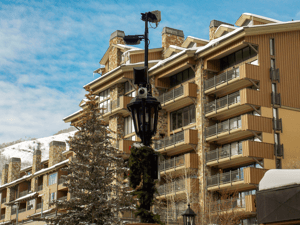- Press -
Wall Street Journal, 12/2001
High-tech Hobbyists Develop Links for the 'Masses
"I've opened the network up to the masses." - Jim Selby

High-Tech Hobbyists Develop Internet Links for the 'Masses'
By Pui-Wing Tam and Scott Thurm Staff Reporters of The Wall Street Journal
Dec. 7, 2001 12:01 am ET
ASPEN, Colo. -- Jim Selby clambered up a ladder onto the roof of a four-story office building here to survey his little alternate empire.
"I've got one on top of there," he said, pointing to a distant rooftop, "and one there, too." Mr. Selby was speaking of all the gray antennas dotting the skyline, broadcasting Internet access all over town. The service is fast and free, which makes Mr. Selby, who put up the towers, a bit of a revolutionary.
"I've got Aspen nailed!" says Mr. Selby, 35 years old, as he gestures at a dozen antennas atop low-rise buildings. "I've opened the network up to the masses."

Some of the nation's big corporations have racked up billions of dollars in losses trying to bring high-speed Internet access to all who might want it. But the 6-foot-4 Mr. Selby, an avowed ski bum, is doing it in his own small way with a combination of Russian military-surplus antennas and electronic parts from a hardware store. His antennas allow anyone in a 45-square-mile area around Aspen with a computer and a $120 plug-in card to surf the Web over the airwaves free at speeds 30 times as fast as with a standard modem.
Mr. Selby is a Wireless Guerrilla, one of several hobbyists around the nation who are building shoestring wireless networks out of such materials as potato-chip cans and rubber hoses. They are doing so by piggybacking free of charge on the premium high-speed Internet connections that telecom and cable companies provide to many homes and businesses for as much as $1,000 a month. Even so, Mr. Selby, who eventually aims to charge for access to his network, says he hasn't encountered any resistance from providers of such high-speed links, who don't seem worried about his plans.
Mr. Selby and fellow guerrillas now operating in cities such as New York, Portland, Ore., and Seattle are defying the conventional wisdom that building high-speed networks is complex and costly. Their secret is a technology known in technical lingo as 802.11b, or Wi-Fi. It was never intended for public Internet access. Using the same unlicensed radio spectrum as microwave ovens and baby monitors, it was designed primarily to transmit signals for 300 to 400 feet in wireless corporate computer networks and from a phone line to a laptop. But history is full of unscripted uprisings just like this, in which people take an existing technology off the shelf and put it to an unanticipated use.
It doesn't take much time or money to set up an 802.11b network. "All that's involved is a simple geek factor," says Bruce Potter, a wireless guerrilla in Leesburg, Va., who estimates it cost him $500 in cables, wireless cards, and other equipment to create a wireless node atop his house. "I've built three or four other antennas so far using Pringles cans, and that cost me about $4."
Many of the guerrillas have adopted a crusading tone about their work. "I want bandwidth to be as free as air," says Rob Flickenger, who founded a free wireless network in Sebastopol, Calif. Bandwidth is the capacity to carry data; broadband is used to describe connections that are faster than conventional modems. Kevin Rich, a Denver-based proponent of free wireless networks, adds: "We want to make it a people's movement."
Wireless guerrillas could face trouble from their own Internet-service providers for allowing non-subscribers to tap in, but so far nobody has bothered them because of the small number of users involved. Shaun Gilmore, executive vice president of Qwest Communications International Inc., which provides local phone service and high-speed Internet access in Aspen, says the wireless guerrillas are "creative people developing creative ways" to make high-speed Internet access available. Building an 802.11b network to piggyback on a high-speed Internet line is "not technically illegal," Mr. Gilmore says in a statement, but adds that it can slow the Internet connection.
Mr. Selby began investigating wireless technologies a few years ago. Through word of mouth, he found a wireless-equipment supplier in Solon, Ohio, from whom he bought two surplus Russian military antennas for a total of $700. At an Aspen hardware store, he picked up a length of rubber hose to protect the wiring. Then he placed the antennas, which he nicknamed "the Ruskis," on an office building owned by some friends and atop his own townhouse.
When Mr. Selby flipped the switch in August 1999, not much happened. "We didn't know squat," he says. But after making a few adjustments, he had a faint signal between his house and the office building. His friends' office was connected to a T-1 line, a direct, high-speed link to the Internet. He had created wireless coverage in a 13-block area. That gave him an idea: Why not deliver the Internet to everybody in town?
Mr. Selby quickly sold his house in Detroit and plowed $80,000 into broadening the network. He began scouting out locations for other antennas. Last year, a former high-tech executive who lived in a mountaintop home gave him permission to put up an antenna in exchange for free wireless service. That increased the network's wireless coverage by five square miles. Mr. Selby soon made the same barter deal with other mountaintop residents.
Word of the free network began spreading. Bill Gurley, a partner at Benchmark Capital, a Silicon Valley venture-capital firm, and Sky Dayton, founder of Internet-service provider Earthlink, unexpectedly tapped into Mr. Selby's network while in Aspen for a conference earlier this year. Mr. Dayton opened his laptop in his hotel room and found he could choose from four guerrilla wireless networks, including Mr. Selby's, to reach the Internet. "I was floored," Mr. Dayton says.
Other entrepreneurs are launching companies to offer small-scale Internet access via 802.11b in airports, hotels and coffee shops. And some think the technology could be harnessed to offer commercial high-speed Internet access to homes and offices. These developments could conceivably spell trouble for long-delayed "third-generation" cellphone networks, which are to offer high-speed data services in addition to voice.
Security is an issue, as some companies using 802.11b discovered when hackers tapped their corporate networks. Mr. Dayton says he can detect a neighbor's 802.11b network when he logs on at his Los Angeles home. You can't prevent people from picking up the signal, which is why Mr. Dayton sees his neighbor's network, but you can encrypt the traffic so they can't read it. Most experts think the problem can be circumvented.
For the past few months, Mr. Selby has been concentrating on scraping together more cash to expand the network, which he says has attracted about 70 free users, including 10 regulars. He plans to augment his 13 antennas with three more by the end of the year. To raise cash, he sold the wireless network in August for $120,000 to a small Aspen company called Broadband West. Mr. Selby, who still runs the network, says he and Broadband West hope to start charging an unspecified fee for the wireless access sometime next year. When the network shows up on somebody's laptop, the person will be directed to a Web page and asked to provide a credit card number and pay a fee.
Visit the online news article here.
Write to Pui-Wing Tam at puiwing.tam@wsj.com and Scott Thurm at scott.thurm@wsj.com
Copyright ©2022 Dow Jones & Company, Inc. All Rights Reserved.
Aspen Smart Networks is empowering the future of communities.
We're committed to helping every community benefit from the transformative power of smart network solutions that enable municipalities, counties, and regional governments succeed at scale. Get help finding the best ways for your network to work together and power the future of your business.



